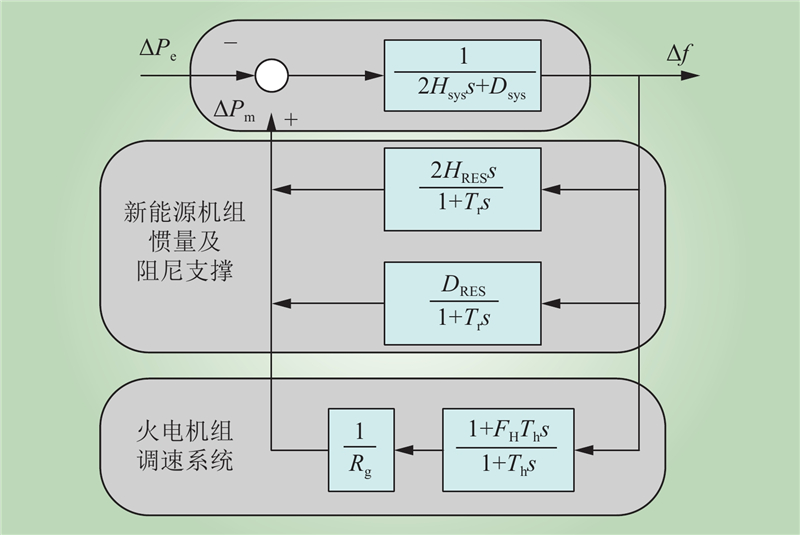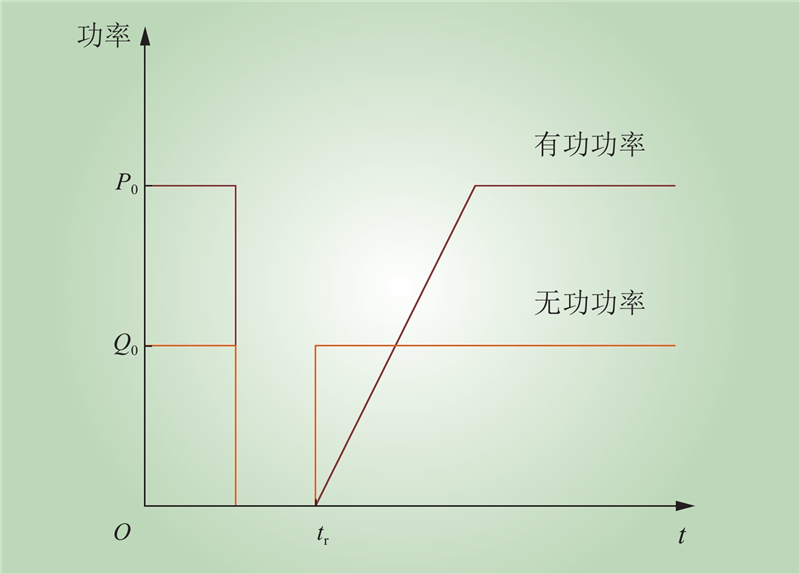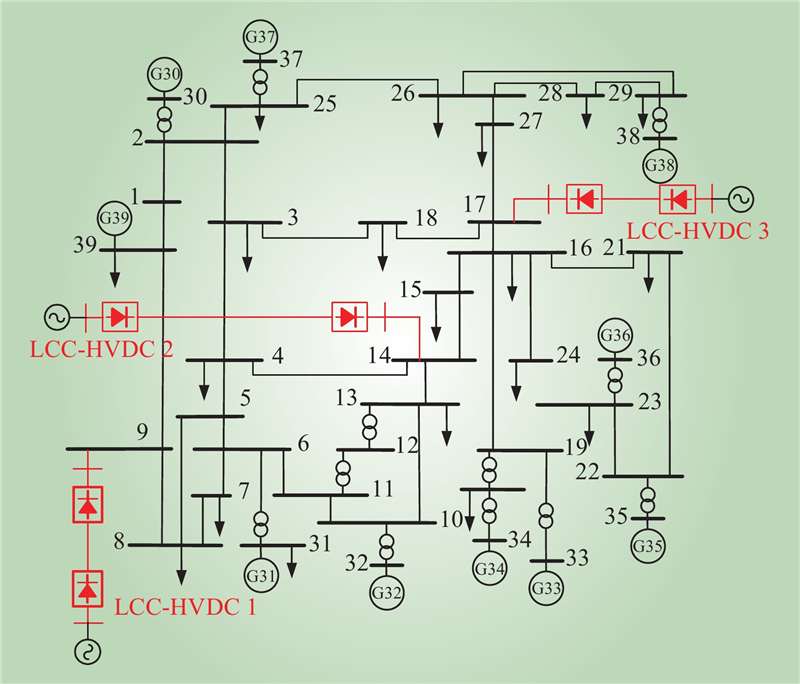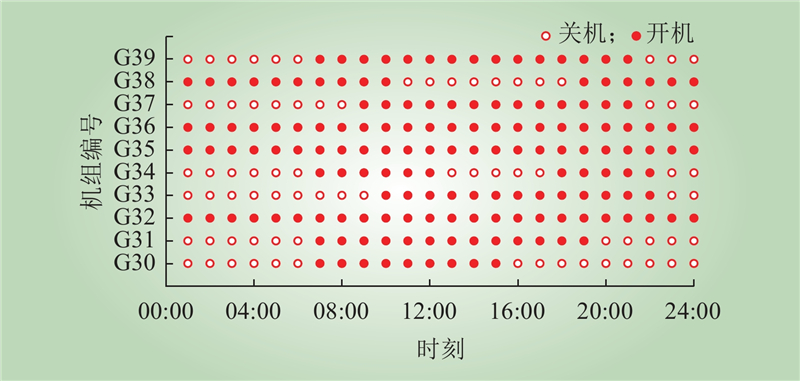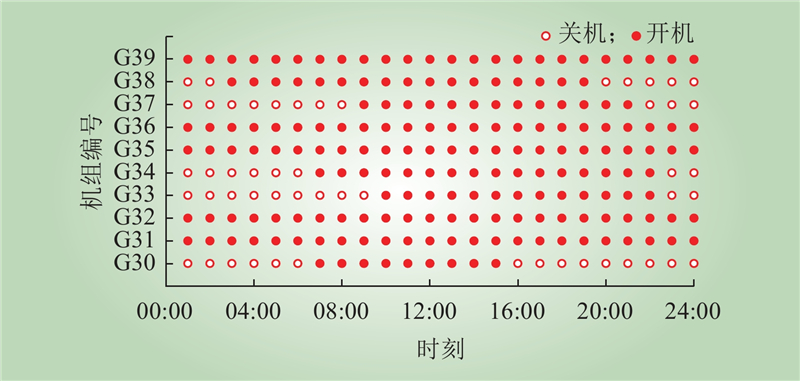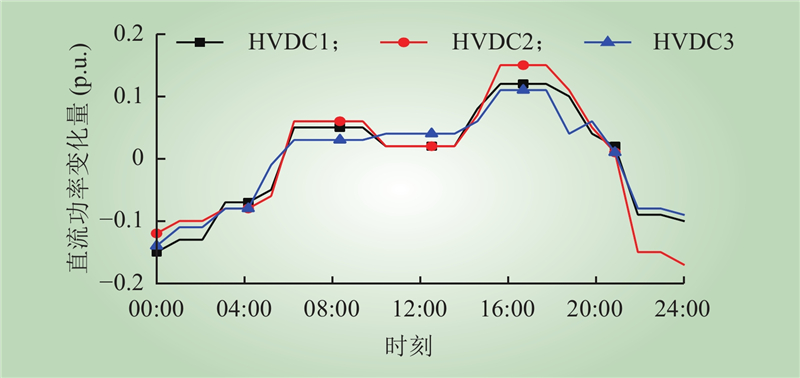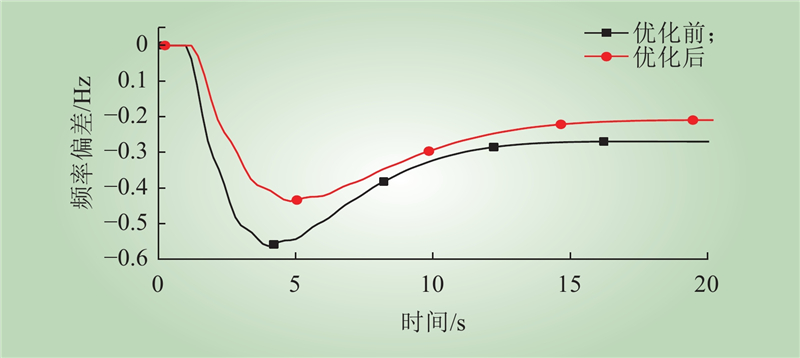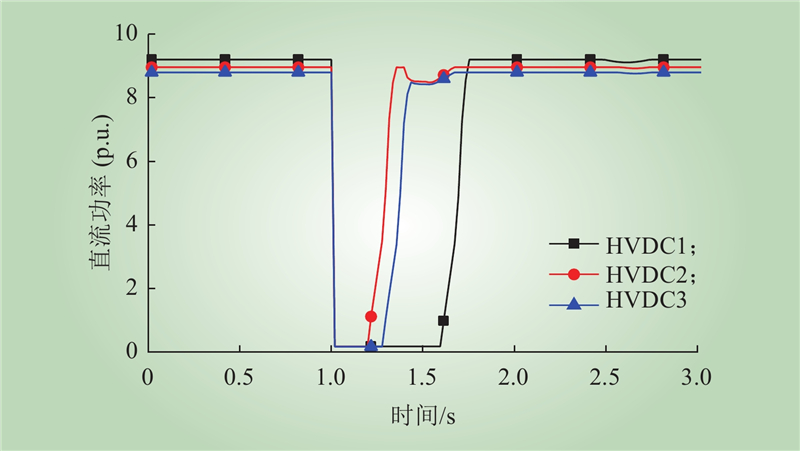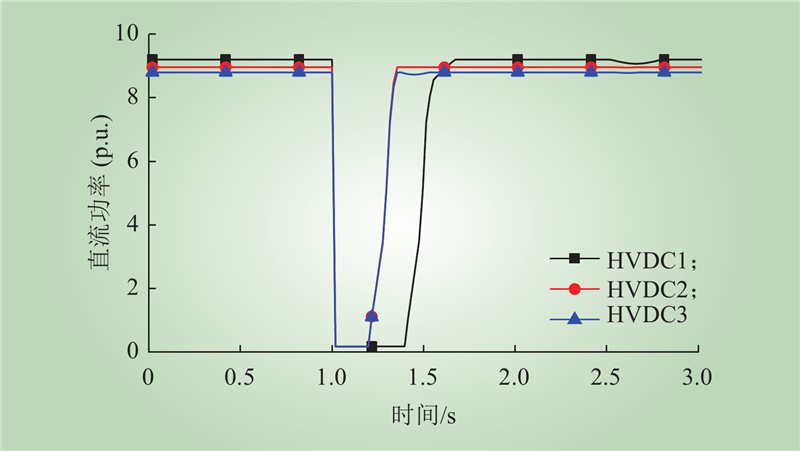| 1 |
刘振亚, 张启平. 国家电网发展模式研究[J]. 中国电机工程学报, 2013, 33 (7): 1- 10.
|
|
LIU Zhenya, ZHANG Qiping. Study on the development mode of national power grid of China[J]. Proceedings of the CSEE, 2013, 33 (7): 1- 10.
|
| 2 |
袁清云. 特高压直流输电技术现状及在我国的应用前景[J]. 电网技术, 2005, 29 (14): 1- 3.
|
|
YUAN Qingyun. Present state and application prospect of ultra HVDC transmission in China[J]. Power System Technology, 2005, 29 (14): 1- 3.
|
| 3 |
贺杨烊, 郑晓冬, 邰能灵, 等. 交直流混联电网LCC-HVDC换流器建模方法综述[J]. 中国电机工程学报, 2019, 39 (11): 3119- 3130.
|
|
HE Yangyang, ZHENG Xiaodong, TAI Nengling, et al. A review of modeling methods for LCC-HVDC converter in AC/DC hybrid power grid[J]. Proceedings of the CSEE, 2019, 39 (11): 3119- 3130.
|
| 4 |
樊鑫, 郭春义, 杜夏冰, 等. 特高压混合级联直流输电系统抑制逆变站后续换相失败的无功功率调控方法[J]. 电网技术, 2021, 45 (9): 3443- 3452.
|
|
FAN Xin, GUO Chunyi, DU Xiabing, et al. Reactive power coordinated control approach for suppressing subsequent commutation failure of inverter station in hybrid cascaded UHVDC system[J]. Power System Technology, 2021, 45 (9): 3443- 3452.
|
| 5 |
刘军会, 杨萌, 李虎军等. 辅助调峰的入豫特高压直流送电曲线优化研究[J]. 河南电力, 2022, (S2): 33- 37.
|
|
LIU Junhui, YANG Meng, LI Hujun, et al. Research on optimization of UHVDC transmission curve for auxiliary peak shaving in Henan province[J]. Henan Electric Power, 2022, (S2): 33- 37.
|
| 6 |
李惠玲. 新型电力系统背景下西部送端直流电网及系统运行特性[J]. 中国电力, 2023, 56 (8): 166- 174.
|
|
LI Huiling. Sending-terminal DC power grid in western China and its operation characteristics in the context of new power system[J]. Electric Power, 2023, 56 (8): 166- 174.
|
| 7 |
戚陈陈, 陈鹏伟, 陈新, 等. 分散式风电高渗透率接入直流受端电网频率特性建模与分析[J]. 电网技术, 2022, 46 (6): 2161- 2170.
|
|
QI Chenchen, CHEN Pengwei, CHEN Xin, et al. Modeling and analyzing for frequency characteristics of distributed wind power with high proportional participation in DC receiving power grid[J]. Power System Technology, 2022, 46 (6): 2161- 2170.
|
| 8 |
王宝财, 孙华东, 李文锋, 等. 考虑动态频率约束的电力系统最小惯量评估[J]. 中国电机工程学报, 2022, 42 (1): 114- 127.
|
|
WANG Baocai, SUN Huadong, LI Wenfeng, et al. Minimum inertia estimation of power system considering dynamic frequency constraints[J]. Proceedings of the CSEE, 2022, 42 (1): 114- 127.
|
| 9 |
李清, 张东辉, 陈名, 等. 多直流馈入输电系统中高压柔性直流高频风险评估计算方法[J]. 南方电网技术, 2023, 17 (12): 1- 9.
|
|
LI Qing, ZHANG Donghui, CHEN Ming, et al. Calculation method for high frequency risk assessment of VSC-HVDC in multi-infeed DC transmission system[J]. Southern Power System Technology, 2023, 17 (12): 1- 9.
|
| 10 |
赵晋泉, 汤建军, 吴迪, 等. 直流馈入受端电网暂态电压与频率稳定紧急协调控制策略[J]. 电力系统自动化, 2020, 44 (22): 45- 53.
|
|
ZHAO Jinquan, TANG Jianjun, WU Di, et al. Emergency coordination control strategy for transient voltage and transient frequency stability in HVDC infeed receiving-end power grid[J]. Automation of Electric Power Systems, 2020, 44 (22): 45- 53.
|
| 11 |
丁浩寅, 周磊, 黄志光, 等. 新能源与多馈入直流的受端电网频率紧急控制策略[J]. 电力系统及其自动化学报, 2023, 35 (11): 74- 83.
|
|
DING Haoyin, ZHOU Lei, HUANG Zhiguang, et al. Frequency emergency control strategy with renewables and external DC[J]. Proceedings of the CSU-EPSA, 2023, 35 (11): 74- 83.
|
| 12 |
娄源媛, 蒋若蒙, 钱峰, 等. 考虑负荷特性的解列后受端电网频率控制策略[J]. 电网技术, 2019, 43 (1): 213- 220.
|
|
LOU Yuanyuan, JIANG Ruomeng, QIAN Feng, et al. Frequency control strategy after receiving-end power grid splitting considering load characteristics[J]. Power System Technology, 2019, 43 (1): 213- 220.
|
| 13 |
杨振南, 王延伟, 庞学跃, 等. 基于储能紧急有功支援策略对受端电网频率稳定性的影响研究[J]. 电力电容器与无功补偿, 2021, 42 (4): 89- 94.
|
|
YANG Zhennan, WANG Yanwei, PANG Xueyue, et al. Influence of emergency active-power support strategy on frequency stability of power network at receiving end[J]. Power Capacitor & Reactive Power Compensation, 2021, 42 (4): 89- 94.
|
| 14 |
周霞, 刘懿诗, 戴剑丰, 等. 考虑风-储-直参与调频的电力系统频率特征定量分析[J]. 电力系统保护与控制, 2023, 51 (6): 30- 44.
|
|
ZHOU Xia, LIU Yishi, DAI Jianfeng, et al. Quantitative analysis of power system frequency characteristics considering wind power-energy storage-flexible HVDC transmission participation in frequency modulation[J]. Power System Protection and Control, 2023, 51 (6): 30- 44.
|
| 15 |
黄弘扬, 徐政, 许烽. 多馈入直流输电系统短路比指标的有效性分析[J]. 电力自动化设备, 2012, 32 (11): 46- 50.
|
|
HUANG Hongyang, XU Zheng, XU Feng. Effectiveness of short circuit ratio index for multi-infeed HVDC system[J]. Electric Power Automation Equipment, 2012, 32 (11): 46- 50.
|
| 16 |
辛焕海, 章枫, 于洋, 等. 多馈入直流系统广义短路比: 定义与理论分析[J]. 中国电机工程学报, 2016, 36 (3): 633- 647.
|
|
XIN Huanhai, ZHANG Feng, YU Yang, et al. Generalized short circuit ratio for multi-infeed DC systems: definition and theoretical analysis[J]. Proceedings of the CSEE, 2016, 36 (3): 633- 647.
|
| 17 |
孔贺, 李业成, 张哲, 等. 阻抗模裕度指标在新能源多馈入系统静态电压稳定评估的适应性分析[J]. 中国电机工程学报, 2024, 44 (8): 3002- 3016.
|
|
KONG He, LI Yecheng, ZHANG Zhe, et al. Adaptability analysis of impedance modulus margin index in static voltage stability evaluation of multi-infeed renewable energy power system[J]. Proceedings of the CSEE, 2024, 44 (8): 3002- 3016.
|
| 18 |
李华取, 彭晓涛, 覃琴, 等. 基于多目标优化的电网直流承载规模评估方法[J]. 电网技术, 2021, 45 (8): 3115- 3124.
|
|
LI Huaqu, PENG Xiaotao, QIN Qin, et al. Assessment of DC load-carrying capacity of power grid based on multiple-objective optimization[J]. Power System Technology, 2021, 45 (8): 3115- 3124.
|
| 19 |
汪家铭, 张静, 杨建华, 等. 基于广义短路比的多馈入直流系统受端电网结构优化方法[J]. 电力系统自动化, 2020, 44 (24): 111- 118.
|
|
WANG Jiaming, ZHANG Jing, YANG Jianhua, et al. Optimization method of receiving-end AC grid structure for multi-infeed DC system based on generalized short-circuit ratio[J]. Automation of Electric Power Systems, 2020, 44 (24): 111- 118.
|
| 20 |
索之闻, 李晖, 张锋, 等. 高比例新能源直流送端系统分布式调相机优化配置[J]. 电力系统保护与控制, 2022, 50 (23): 133- 141.
|
|
SUO Zhiwen, LI Hui, ZHANG Feng, et al. Optimal configuration of a distributed synchronous condenser for an HVDC sending-end system with a high-proportion of renewable energy[J]. Power System Protection and Control, 2022, 50 (23): 133- 141.
|
| 21 |
潘学萍, 李乐, 黄华, 等. 综合灵敏度和静态电压稳定裕度的直流受端交流系统电压薄弱区域评估方法[J]. 电力自动化设备, 2019, 39 (3): 1- 8.
|
|
PAN Xueping, LI Le, HUANG Hua, et al. Method for evaluating voltage weak area of AC power system at DC receiving end considering sensitivity and static voltage stability margin[J]. Electric Power Automation Equipment, 2019, 39 (3): 1- 8.
|
| 22 |
肖浩, 李银红, 何璇, 等. 混合多馈入直流系统换相失败免疫水平快速评估方法[J]. 中国电机工程学报, 2017, 37 (17): 4986- 4998, 5218.
|
|
XIAO Hao, LI Yinhong, HE Xuan, et al. A rapid assessment method of commutation failure immunity level for hybrid multi-infeed HVDC transmission systems[J]. Proceedings of the CSEE, 2017, 37 (17): 4986- 4998, 5218.
|
| 23 |
尹纯亚, 李凤婷, 宋新甫, 等. 多馈出直流系统换相失败快速判别方法[J]. 电网技术, 2019, 43 (10): 3459- 3465.
|
|
YIN Chunya, LI Fengting, SONG Xinfu, et al. A fast detection method of commutation failure in multi-outfeed DC system[J]. Power System Technology, 2019, 43 (10): 3459- 3465.
|
| 24 |
叶萌, 胡云, 刘婷, 等. 大容量STATCOM与弱受端直流VDCOL协调控制策略优化研究[J]. 南方电网技术, 2024, 18 (4): 1- 9.
|
|
YE Meng, HU Yun, LIU Ting, et al. Study on the optimization of large capacity STATCOM and weak receiving-end VDCOL coordinated control strategy in HVDC[J]. Southern Power System Technology, 2024, 18 (4): 1- 9.
|
| 25 |
梁伟, 吴林林, 赖启平, 等. 风电直流送出系统送端交流故障下风机过电压研究[J]. 中国电力, 2023, 56 (4): 28- 37.
|
|
LIANG Wei , WU Linlin , LAI Qiping , et al. Study on Overvoltage of wind farm under AC fault at sending end of HVDC transmission system[J]. Electric Power, 2023, 56 (4): 28- 37.
|
| 26 |
徐政. 新型电力系统背景下电网强度的合理定义及其计算方法[J]. 高电压技术, 2022, 48 (10): 3805- 3819.
|
|
XU Zheng. Reasonable definition and calculation method of power grid strength under the background of new type power systems[J]. High Voltage Engineering, 2022, 48 (10): 3805- 3819.
|
| 27 |
邵瑶, 汤涌. 采用多馈入交互作用因子判断高压直流系统换相失败的方法[J]. 中国电机工程学报, 2012, 32 (4): 108- 114.
|
|
SHAO Yao, TANG Yong. A commutation failure detection method for HVDC systems based on multi-infeed interaction factors[J]. Proceedings of the CSEE, 2012, 32 (4): 108- 114.
|


